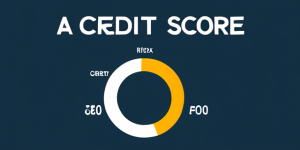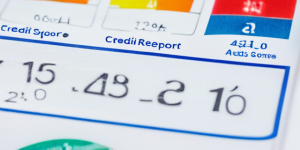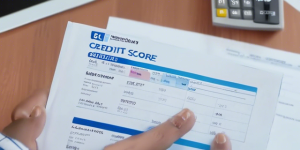
Buying a home is a significant milestone, and securing the right mortgage is crucial. Among the various loan options available, conventional loans are a popular choice. However, one of the essential requirements for obtaining a conventional loan is meeting the credit score criteria. In this article, we’ll dive into the world of credit scores and explore what you need to qualify for a conventional loan.
Understanding Credit Scores
Before we delve into the specifics of conventional loan requirements, let’s briefly discuss credit scores. A credit score is a three-digit number that represents your creditworthiness. It’s calculated based on various factors, including your payment history, outstanding debt, length of credit history, and credit mix.
Lenders use credit scores to assess the risk of lending to you. A higher credit score typically indicates a lower risk, making you a more attractive borrower. Conversely, a lower credit score may signal a higher risk, potentially leading to higher interest rates or even loan denial.
What Is a Conventional Loan?

A conventional loan is a type of mortgage that is not insured or guaranteed by the government. These loans are offered by private lenders, such as banks, credit unions, and mortgage companies. Conventional loans are often considered a more stringent option compared to government-backed loans, such as FHA or VA loans.
Credit Score Requirements for Conventional Loans
The credit score requirements for conventional loans can vary depending on the lender and the specific loan program. However, there are general guidelines that most lenders follow.
Minimum Credit Score
Generally, most lenders require a minimum credit score of 620 for a conventional loan. This is often referred to as the “baseline” credit score requirement. However, it’s important to note that a higher credit score may be necessary to qualify for the best interest rates and loan terms.
Credit Score Tiers
Lenders typically categorize credit scores into different tiers, each with its own set of requirements and implications. Here’s a general breakdown of credit score tiers for conventional loans:
- Excellent Credit (740 and above): If your credit score falls into this tier, you’re considered a low-risk borrower and will likely qualify for the best interest rates and loan terms.
- Good Credit (700-739): A credit score in this range is still considered good, but you may not qualify for the absolute best rates and terms.
- Fair Credit (620-699): With a credit score in this tier, you may still be approved for a conventional loan, but you’ll likely face higher interest rates and potentially stricter underwriting requirements.
- Poor Credit (619 and below): If your credit score falls below 620, it may be challenging to qualify for a conventional loan. In this case, you may need to explore alternative loan options or work on improving your credit score before applying.
It’s important to note that these credit score tiers are general guidelines, and individual lenders may have slightly different criteria.
Factors Affecting Credit Score Requirements

While credit scores are a significant factor in determining your eligibility for a conventional loan, lenders also consider other factors. These can include:
- Down Payment: A larger down payment can sometimes offset a lower credit score, as it reduces the lender’s risk.
- Debt-to-Income Ratio (DTI): Your DTI ratio is the percentage of your monthly gross income that goes towards paying your recurring debts, including the prospective mortgage payment. Lenders prefer a lower DTI ratio, typically below 43%.
- Employment History and Income Stability: Lenders want to ensure that you have a stable source of income to make your mortgage payments.
- Collateral: The value of the property you’re purchasing can also play a role, as it serves as collateral for the loan.
- Compensating Factors: In some cases, lenders may consider compensating factors, such as a strong employment history or significant cash reserves, to offset a lower credit score.
Tips for Improving Your Credit Score

If your credit score falls below the desired range for a conventional loan, there are several steps you can take to improve it:
- Review Your Credit Reports: Obtain a copy of your credit reports from the three major credit bureaus (Experian, Equifax, and TransUnion) and review them for any errors or inaccuracies. Dispute any incorrect information with the respective credit bureau.
- Pay Bills on Time: Payment history is one of the most significant factors affecting your credit score. Make sure to pay all your bills on time, including credit card payments, utilities, and other recurring expenses.
- Reduce Outstanding Debt: High levels of debt can negatively impact your credit score. Focus on paying down your existing debts, especially credit card balances, to improve your credit utilization ratio.
- Limit New Credit Applications: Each time you apply for new credit, it can result in a hard inquiry on your credit report, which can temporarily lower your score. Limit your credit applications unless absolutely necessary.
- Increase Credit Limits: If you have a good payment history with your existing credit cards, you may be able to request a credit limit increase. This can improve your credit utilization ratio without accumulating more debt.
- Use Different Types of Credit: Lenders prefer borrowers who can responsibly manage different types of credit, such as revolving credit (credit cards) and installment loans (personal loans, auto loans, etc.).
- Be Patient: Improving your credit score takes time and consistent effort. Depending on your specific situation, it may take several months or even years to significantly improve your credit score.
Conclusion
Obtaining a conventional loan requires meeting specific credit score requirements set by lenders. While a credit score of 620 is generally the minimum requirement, higher scores can lead to better interest rates and loan terms. Additionally, lenders consider other factors, such as your down payment, debt-to-income ratio, and employment history.
If your credit score falls below the desired range, don’t lose hope. By implementing strategies to improve your credit score, such as paying bills on time, reducing outstanding debt, and limiting new credit applications, you can increase your chances of qualifying for a conventional loan in the future.
Remember, buying a home is a significant investment, and taking the time to improve your credit score can save you thousands of dollars in interest over the life of your mortgage. Be patient, stay committed, and work towards achieving your homeownership goals.
Frequently Asked Questions (FAQs)
- Can I get a conventional loan with a credit score below 620? While a credit score below 620 may make it challenging to qualify for a conventional loan, it’s not impossible. Some lenders may approve borrowers with lower credit scores if they have compensating factors, such as a larger down payment or a low debt-to-income ratio. However, you may face higher interest rates and stricter underwriting requirements.
- How much of a down payment is required for a conventional loan? The minimum down payment for a conventional loan is typically 3%, but lenders often prefer a higher down payment, such as 20%, to avoid private mortgage insurance (PMI). A larger down payment can also help offset a lower credit score.
- Does my credit score affect the interest rate on a conventional loan? Yes, your credit score plays a significant role in determining the interest rate you’ll be offered for a conventional loan. Generally, the higher your credit score, the lower the interest rate you’ll qualify for, which can save you thousands of dollars over the life of the loan.
- How long does it take to improve my credit score? The time it takes to improve your credit score depends on your specific situation and the factors affecting your score. Typically, it can take several months to see a noticeable improvement, but more significant improvements may take a year or longer.
- Can I get a conventional loan with a low credit score and a co-signer? Some lenders may allow a co-signer with a higher credit score to help you qualify for a conventional loan if your credit score is low. However, not all lenders accept co-signers, and the co-signer becomes equally responsible for the loan.

So, you’re thinking about taking the plunge and buying a house? Congratulations! Homeownership is a significant milestone and a great investment in your future. However, before you start browsing those real estate listings, there’s one crucial factor you need to consider: your credit score. Your credit score plays a pivotal role in determining your eligibility for a mortgage and the interest rates you’ll be offered.
In this article, we’ll dive deep into the world of credit scores and explore what score you need to buy a house. We’ll also provide you with valuable tips and strategies to improve your credit score, increasing your chances of securing a favorable mortgage and making your dream of homeownership a reality.
Understanding Credit Scores

Before we delve into the specifics of credit scores and mortgages, let’s first understand what a credit score is and why it’s so important.
What is a Credit Score?
A credit score is a three-digit number that represents your creditworthiness. It’s a numerical representation of your credit history, payment habits, and overall financial responsibility. Credit scores are calculated by credit reporting agencies, such as Experian, Equifax, and TransUnion, using complex algorithms that analyze your credit report.
Credit scores typically range from 300 to 850, with higher scores indicating a lower risk for lenders. A good credit score can open doors to better interest rates, higher loan amounts, and more favorable terms when applying for credit products, including mortgages.
Why is Your Credit Score Important for Buying a House?
When you apply for a mortgage, lenders will scrutinize your credit score to assess the risk of lending you money. A higher credit score signals to lenders that you’re a responsible borrower with a proven track record of making payments on time and managing your credit responsibly.
Conversely, a lower credit score may raise red flags for lenders, indicating a higher risk of default or late payments. As a result, lenders may deny your mortgage application outright or offer you less favorable terms, such as higher interest rates or stricter down payment requirements.
Credit Score Requirements for Mortgages
Now that you understand the importance of credit scores, let’s explore the specific credit score requirements for different types of mortgages.
Conventional Mortgages
Conventional mortgages are those that are not insured or guaranteed by the government. These types of mortgages typically have more stringent credit score requirements than government-backed loans.
Most lenders require a minimum credit score of 620 to qualify for a conventional mortgage. However, to secure the best interest rates and terms, you’ll generally need a credit score of at least 740.
FHA Loans
FHA (Federal Housing Administration) loans are mortgages insured by the U.S. Department of Housing and Urban Development (HUD). These loans are designed to make homeownership more accessible to borrowers with lower credit scores or limited funds for a down payment.
The minimum credit score requirement for an FHA loan is typically 580. However, if your credit score falls between 500 and 579, you may still be eligible for an FHA loan, but you’ll be required to make a larger down payment, usually 10% of the home’s purchase price.
VA Loans
VA (Veterans Affairs) loans are mortgages backed by the U.S. Department of Veterans Affairs and are available to eligible military members, veterans, and their spouses.
While the VA doesn’t have a specific minimum credit score requirement, most lenders typically require a credit score of at least 620 to qualify for a VA loan. However, lenders may be more lenient with lower credit scores if you have compensating factors, such as a low debt-to-income ratio or a substantial down payment.
USDA Loans
USDA (United States Department of Agriculture) loans are designed to help low- and moderate-income households purchase homes in eligible rural areas.
The minimum credit score requirement for a USDA loan is typically 640. However, like VA loans, lenders may consider compensating factors if your credit score falls below this threshold.
Improving Your Credit Score for a Mortgage

If your credit score doesn’t quite meet the requirements for the type of mortgage you’re seeking, don’t worry – there are steps you can take to improve it. Here are some effective strategies to boost your credit score:
1. Check Your Credit Reports
The first step in improving your credit score is to obtain copies of your credit reports from the three major credit bureaus (Experian, Equifax, and TransUnion). Review them carefully for any errors, such as incorrect personal information, accounts you didn’t open, or inaccurate payment histories.
If you find any errors, dispute them with the respective credit bureau. Correcting errors can have a positive impact on your credit score.
2. Pay Your Bills on Time
Payment history is the most significant factor influencing your credit score. Late or missed payments can severely damage your score, so it’s crucial to make all your payments on time, including credit card bills, loans, utilities, and rent.
Consider setting up automatic payments or payment reminders to ensure you never miss a due date.
3. Reduce Your Credit Utilization Ratio
Your credit utilization ratio, or the amount of credit you’re using compared to your total available credit, is another crucial factor in determining your credit score. Ideally, you should aim to keep your credit utilization ratio below 30% for each credit card and overall.
To lower your credit utilization ratio, you can either pay down your outstanding balances or request a credit limit increase from your credit card issuers (but only if you trust yourself not to overspend).
4. Avoid Closing Old Credit Cards
While it may seem counterintuitive, closing old credit cards can actually hurt your credit score. This is because it can shorten your average credit history length and reduce your total available credit, both of which are factors in calculating your credit score.
Instead of closing old cards, consider keeping them open and using them occasionally to maintain account activity.
5. Limit Hard Credit Inquiries
Every time you apply for new credit, such as a credit card or loan, the lender will perform a hard inquiry on your credit report. Too many hard inquiries in a short period can negatively impact your credit score.
Limit your credit applications to only what’s necessary, and space them out over time. Checking your own credit report or being pre-approved for offers typically results in a soft inquiry, which does not affect your score.
6. Consider a Credit-Builder Loan or Secured Credit Card
If you have a thin credit file or no credit history, you may want to consider a credit-builder loan or a secured credit card. These products are designed to help you establish or rebuild your credit.
With a credit-builder loan, you make regular payments to a lender, and the money is held in an account until you’ve paid off the loan. The lender then reports your positive payment history to the credit bureaus, helping you build credit.
A secured credit card, on the other hand, requires a refundable security deposit that serves as your credit limit. By using the card responsibly and making on-time payments, you can build a positive credit history.
7. Dispute Inaccurate Negative Items
If you find negative items on your credit report that you believe are inaccurate or outdated, you can dispute them with the credit bureaus. This process may take some time and effort, but successfully removing inaccurate negative items can significantly improve your credit score.
8. Become an Authorized User
Another strategy to build or improve your credit is to become an authorized user on someone else’s credit card account, ideally an account with a long, positive payment history and low credit utilization. As an authorized user, the account’s history may be added to your credit report, potentially boosting your score.
However, be cautious when using this strategy, as the primary account holder’s behavior can also negatively impact your credit if they mismanage the account.
9. Manage Your Credit Mix
Your credit mix, or the variety of credit accounts you have (e.g., credit cards, mortgages, auto loans), also contributes to your credit score. Lenders tend to favor individuals with a diverse credit mix, as it demonstrates their ability to handle different types of credit responsibly.
If you currently only have one type of credit account, consider responsibly adding another type, such as an installment loan or a credit card, to diversify your credit mix.
10. Be Patient and Consistent
Improving your credit score takes time and consistent effort. It’s essential to be patient and consistently practice good credit habits, such as making on-time payments, keeping credit utilization low, and avoiding excessive credit applications.
While some strategies may produce quicker results, such as disputing errors or becoming an authorized user, others may take several months or even years to fully reflect in your credit score.
Other Factors Lenders Consider
While your credit score is a crucial factor in determining your mortgage eligibility and terms, it’s not the only consideration lenders take into account. Here are some other important factors that lenders evaluate when reviewing your mortgage application:
1. Debt-to-Income Ratio (DTI)
Your debt-to-income ratio (DTI) is a measure of your monthly debt obligations compared to your gross monthly income. Lenders use this ratio to assess your ability to manage your monthly mortgage payments in addition to your existing debt obligations.
Generally, lenders prefer a DTI ratio of 43% or lower, although some may allow higher ratios if you have compensating factors, such as a larger down payment or significant cash reserves.
2. Down Payment
The size of your down payment plays a significant role in determining the terms of your mortgage. A larger down payment not only reduces the overall amount you need to borrow but also demonstrates your financial commitment to the property.
Most lenders require a minimum down payment of 20% for conventional mortgages to avoid the need for private mortgage insurance (PMI). However, some mortgage programs, such as FHA and VA loans, allow for lower down payments.
3. Employment History and Income Stability
Lenders want to ensure that you have a steady and reliable source of income to make your mortgage payments. They’ll typically review your employment history, current income sources, and income stability.
If you’re self-employed or have irregular income streams, you may need to provide additional documentation, such as tax returns, profit and loss statements, and bank statements, to verify your income.
4. Collateral (Property Value)
The property you’re purchasing serves as collateral for the mortgage loan. Lenders will order an appraisal to determine the home’s fair market value and ensure that it aligns with the purchase price.
If the appraisal comes in lower than the agreed-upon purchase price, the lender may require a larger down payment or adjust the loan amount accordingly.
5. Loan Type and Terms
The type of mortgage you choose and the associated terms can also impact your overall eligibility and interest rate. For example, adjustable-rate mortgages (ARMs) may have different credit score requirements than fixed-rate mortgages, and jumbo loans (those that exceed conforming loan limits) often require higher credit scores and more stringent qualifications.
6. Cash Reserves
Lenders may also consider your available cash reserves, which refer to the amount of liquid assets you have on hand to cover mortgage payments and other expenses in case of an emergency or job loss.
Having sufficient cash reserves can be seen as a positive factor by lenders, as it demonstrates your ability to weather financial storms and make your mortgage payments even if your income is disrupted.
Strategies for Buying a House with a Lower Credit Score
If your credit score doesn’t quite meet the typical requirements for a mortgage, don’t lose hope. There are still strategies you can employ to increase your chances of getting approved and securing a favorable mortgage:
1. Consider an FHA Loan
As mentioned earlier, FHA loans have more lenient credit score requirements compared to conventional mortgages. If your credit score falls below the conventional threshold, an FHA loan may be a viable option.
Keep in mind that FHA loans typically require a higher mortgage insurance premium (MIP), which can increase your overall housing costs.
2. Seek Out Lender-Specific Programs
Some lenders offer in-house mortgage programs or portfolio loans with more flexible credit score requirements. These programs may be designed for borrowers with unique circumstances or lower credit scores.
While the interest rates and terms may not be as favorable as those offered for borrowers with excellent credit, these programs can provide an alternative path to homeownership.
3. Increase Your Down Payment
A larger down payment can help offset the perceived risk associated with a lower credit score. By putting more money down upfront, you’ll reduce the lender’s exposure and potentially qualify for better terms or interest rates.
4. Obtain a Co-Signer or Co-Borrower
If you’re having trouble qualifying for a mortgage on your own due to a lower credit score, you may consider adding a co-signer or co-borrower with a stronger credit profile to your application.
However, it’s essential to understand the legal and financial responsibilities involved, as the co-signer or co-borrower will be equally responsible for the mortgage payments.
5. Explore Alternative Lending Options
In some cases, traditional lenders may not be able to accommodate your specific situation, even with compensating factors. If this is the case, you may want to explore alternative lending options, such as private lenders or portfolio lenders.
Keep in mind that these lenders may have higher interest rates and more stringent terms, so it’s crucial to carefully evaluate the costs and risks involved.
Additional Tips for Home Buyers
Beyond improving your credit score and understanding the mortgage qualification process, here are some additional tips to help you navigate the home-buying journey:
1. Get Pre-Approved
Before you start house hunting, it’s a good idea to get pre-approved for a mortgage. This process involves a lender thoroughly reviewing your financial situation, including your credit score, income, and debts, to determine how much you can borrow.
A pre-approval letter not only gives you a clear understanding of your budget but also shows sellers that you’re a serious buyer, which can give you an edge in a competitive market.
2. Work with a Reputable Lender
Choosing the right lender is crucial when applying for a mortgage. Research different lenders, compare interest rates and fees, and read reviews from previous customers.
Additionally, consider working with a mortgage broker who can shop around and compare options from multiple lenders on your behalf.
3. Prepare for Additional Costs
When budgeting for a home purchase, don’t forget to factor in additional costs beyond the purchase price, such as closing costs, moving expenses, and potential repairs or renovations.
These costs can add up quickly, so it’s essential to have a realistic understanding of your overall financial commitment.
4. Consider Future Plans
When choosing a mortgage, think about your long-term goals and plans. For example, if you plan to stay in the home for an extended period, a fixed-rate mortgage may be a better option to lock in a consistent monthly payment.
On the other hand, if you anticipate moving within a few years, an adjustable-rate mortgage (ARM) with lower initial rates could be more cost-effective in the short term.
5. Seek Professional Advice
The home-buying process can be complex and overwhelming, especially for first-time buyers. Consider seeking the advice of a professional, such as a real estate agent, mortgage broker, or financial advisor, to help guide you through the process and ensure you make informed decisions.
Conclusion
Buying a house is a significant financial milestone, and your credit score plays a crucial role in determining your eligibility for a mortgage and the terms you’ll receive. While the exact credit score requirements can vary depending on the type of mortgage and lender, most conventional lenders prefer a score of at least 620, with higher scores often resulting in more favorable interest rates and terms.
However, if your credit score falls below the typical requirements, don’t despair. There are various strategies you can employ to improve your credit score, such as paying bills on time, reducing your credit utilization ratio, and disputing inaccurate negative items. Additionally, you may explore alternative mortgage options like FHA loans, seek out lender-specific programs, or consider increasing your down payment.
Remember, improving your credit score and securing a favorable mortgage takes time and consistent effort, but the rewards of homeownership make it well worth the investment. By being proactive, patient, and diligent in your approach, you can increase your chances of achieving your dream of homeownership.
FAQs
1. Can I get a mortgage with a credit score below 600? While it’s more challenging, getting a mortgage with a credit score below 600 is still possible in some cases. FHA loans, for instance, allow credit scores as low as 500 with a 10% down payment. However, you may face higher interest rates and stricter terms.
2. How long does it take to improve my credit score for a mortgage? The time it takes to improve your credit score can vary depending on your specific situation and the strategies you implement. Some actions, like disputing errors or paying down balances, can yield quicker results, while building a positive payment history may take several months or even years.
3. Does having a co-signer or co-borrower guarantee mortgage approval? No, having a co-signer or co-borrower does not guarantee mortgage approval. While it can help offset the risk associated with a lower credit score, lenders will still evaluate the entire application package, including the co-signer’s or co-borrower’s credit profile, income, and debts.
4. Should I focus on paying off debt or saving for a down payment? Both paying off debt and saving for a down payment are important when preparing to buy a house. However, the approach you take may depend on your specific situation and goals.
If you have a significant amount of high-interest debt, such as credit card balances, it may be wise to prioritize paying that off first. High debt levels can negatively impact your credit score and debt-to-income ratio, making it more challenging to qualify for a mortgage or secure favorable terms.
On the other hand, if your debt levels are manageable and you have a good credit score, focusing on saving for a larger down payment can be a better strategy. A larger down payment not only reduces the amount you need to borrow but also demonstrates your financial commitment to the lender, potentially resulting in better interest rates and terms.
Ultimately, it’s essential to strike a balance between debt repayment and saving for a down payment while considering your unique financial circumstances and timeline for homeownership.
5. Can I buy a house with a credit score in the 600s? While it’s possible to buy a house with a credit score in the 600s, your options and terms may be more limited compared to those with higher scores. FHA loans, for example, allow credit scores as low as 580 with a minimum 3.5% down payment, but you’ll likely face higher interest rates and mortgage insurance premiums.
Conventional mortgages typically require scores of at least 620, but some lenders may have more stringent requirements or offer better terms for scores above 700 or 740. If your score falls in the 600s, it’s crucial to shop around with different lenders, consider alternative loan programs, and explore strategies to improve your credit score further.
Remember, while a lower credit score doesn’t necessarily disqualify you from homeownership, it can significantly impact the overall costs and terms of your mortgage. It’s essential to weigh the pros and cons and make informed decisions based on your specific financial situation.
Additional Resources
To further assist you in your home-buying journey and credit score improvement efforts, here are some additional resources from reputable sources:
- Experian’s Credit Education Hub – Experian, one of the major credit bureaus, offers a wealth of information and educational resources on credit scores, credit reports, and credit management.
- Consumer Financial Protection Bureau’s Mortgage Resources – The CFPB provides comprehensive guides, tools, and resources to help consumers navigate the mortgage process, including understanding credit score requirements and improving credit.
- FHA Loan Requirements – The U.S. Department of Housing and Urban Development (HUD) offers detailed information on FHA loan requirements, including credit score guidelines and other eligibility criteria.
- Fannie Mae’s Know Your Options – Fannie Mae’s website provides educational resources and tools to help homebuyers understand different mortgage options and navigate the home-buying process.
- Freddie Mac’s CreditSmart – Freddie Mac’s CreditSmart program offers free online courses and resources to help individuals build and maintain good credit.
Remember, knowledge is power when it comes to homeownership and credit management. By utilizing these resources and seeking professional guidance when needed, you’ll be better equipped to make informed decisions and achieve your homeownership goals.
]]>
Are you dreaming of owning your own home but worried that your credit score might not be up to par? Don’t fret, my friend! Improving your credit score for a mortgage is a journey, but with the right strategies and determination, you can boost those numbers and make your homeownership dreams a reality.
The Importance of a Good Credit Score
Before we dive into the nitty-gritty, let me ask you a question: why is a good credit score so crucial when it comes to obtaining a mortgage? Well, my dear reader, your credit score is like a report card that lenders use to evaluate your creditworthiness. A higher score tells them that you’re a responsible borrower who is likely to repay your loans on time, while a lower score raises red flags.
Lenders want to minimize their risk, and a strong credit score gives them the confidence they need to offer you better interest rates and loan terms. Trust me; a few points can make a massive difference in how much you’ll pay over the life of your mortgage.
Understanding Your Credit Score

Now, let’s demystify this credit score business. Your credit score typically ranges from 300 to 850, with higher numbers indicating a better credit history. Generally, a score of 700 or above is considered good, while a score above 760 is excellent.
But what factors determine your score? Well, buckle up because it’s a bit of a rollercoaster ride. Your payment history (35% of your score), amount of debt (30%), length of credit history (15%), types of credit (10%), and new credit inquiries (10%) all play a role.
Checking Your Credit Report
Before you can start improving your credit score, you need to know where you stand. That’s why it’s essential to obtain a copy of your credit report from the three major credit bureaus: Experian, Equifax, and TransUnion. You can get a free report from each bureau once a year at AnnualCreditReport.com.
Comb through those reports like a detective, looking for any errors or inaccuracies that could be dragging down your score. If you find any, dispute them immediately with the credit bureaus. It’s your right to have accurate information on your report, and fixing mistakes can give your score a nice boost.
Paying Down Debt

One of the most effective ways to improve your credit score is to tackle your debt head-on. Lenders love to see a low debt-to-income ratio, which shows that you’re not overextended. But how do you go about paying down debt? Here are a few strategies:
- Prioritize high-interest debt: Credit card balances with sky-high interest rates can quickly spiral out of control. Focus on paying off those debts first to save money and improve your credit utilization ratio (the amount of credit you’re using compared to your credit limits).
- Negotiate better rates: Don’t be afraid to pick up the phone and negotiate with your creditors. They may be willing to lower your interest rates or set up a more manageable payment plan, especially if you’ve been a reliable customer.
- Consolidate your debt: If you have multiple debts with varying interest rates, consider consolidating them into a single loan with a lower interest rate. This can make repayment more manageable and potentially save you money in the long run.
- Seek professional help: If your debt situation feels overwhelming, don’t hesitate to seek help from a reputable credit counseling agency. They can help you develop a personalized debt management plan and even negotiate with creditors on your behalf.
Building Positive Credit History
While paying down debt is crucial, you also need to build a positive credit history to boost your score. Here’s how you can do that:
- Make payments on time: Late or missed payments can do serious damage to your credit score. Set up automatic payments or payment reminders to ensure that you never miss a due date.
- Keep credit card balances low: Ideally, you want to keep your credit utilization ratio below 30%. This demonstrates that you’re using credit responsibly and not maxing out your cards.
- Become an authorized user: If you have a family member or friend with a long, positive credit history, ask them to add you as an authorized user on one of their credit cards. This can help establish credit history for you and improve your score.
- Apply for a secured credit card: If you’re starting from scratch or have had credit issues in the past, a secured credit card can be a great way to build or rebuild your credit. You’ll need to put down a refundable security deposit, but making on-time payments can help boost your score.
Monitoring Your Progress
Rome wasn’t built in a day, and neither is a stellar credit score. Improving your credit takes time and consistency, so it’s essential to monitor your progress regularly. Here’s how you can do that:
- Check your credit reports periodically: Keep an eye on your credit reports from all three bureaus to ensure that your efforts are paying off and that no new errors or inaccuracies have crept in.
- Use credit monitoring services: Many companies offer credit monitoring services that can alert you to changes in your credit report and score. This can be a convenient way to stay on top of your progress without having to check your reports manually.
- Be patient and persistent: Remember, improving your credit score is a marathon, not a sprint. Stick to your plan, and trust that your hard work will pay off in the long run.
Other Tips for Improving Your Credit Score

While paying down debt, building positive credit history, and monitoring your progress are the main pillars of credit score improvement, there are a few other tips that can help you along the way:
- Limit hard inquiries: Each time you apply for new credit, the lender will perform a hard inquiry on your credit report, which can temporarily lower your score. Limit these inquiries to only when you absolutely need new credit.
- Avoid closing old accounts: Closing old credit accounts can negatively impact your credit history length and credit utilization ratio. It’s generally better to keep them open, even if you’re not using them actively.
- Consider credit counseling: If you’re struggling with debt or have a particularly complex credit situation, seeking guidance from a reputable credit counseling agency can be invaluable.
Conclusion
Improving your credit score for a mortgage might seem like a daunting task, but with dedication and the right strategies, it’s absolutely achievable. Remember, a higher credit score not only increases your chances of being approved for a mortgage but also gives you access to better interest rates and loan terms, potentially saving you thousands of dollars over the life of your loan.
So, take a deep breath, roll up your sleeves, and get to work. Pay down debt, build positive credit history, monitor your progress, and don’t be afraid to seek help when you need it. Before you know it, you’ll be holding the keys to your dream home, all thanks to your hard work and a stellar credit score.
FAQs
- How long does it take to improve your credit score? The time it takes to improve your credit score can vary depending on your current situation and the steps you take. Generally, you can see significant improvements within 6 to 12 months of consistently practicing good credit habits, but it may take longer if you have more serious credit issues to address.
- What is the minimum credit score needed for a mortgage? While there is no universal minimum credit score requirement for a mortgage, most lenders prefer to see a score of at least 620 for conventional loans and 500-580 for FHA loans. However, higher scores will typically qualify you for better interest rates and loan terms.
- Can I get a mortgage with a credit score below 620? It is possible to get a mortgage with a credit score below 620, but your options may be more limited, and you may have to explore alternative lending options such as FHA loans, VA loans, or subprime lenders. However, these loans often come with higher interest rates and stricter requirements.
- How often should I check my credit report? It’s generally recommended to check your credit report from all three major credit bureaus (Experian, Equifax, and TransUnion) at least once a year. This will allow you to identify and dispute any errors or inaccuracies that could be negatively impacting your credit score.
- Can closing unused credit cards improve my credit score? Closing unused credit cards can actually hurt your credit score in some cases. This is because closing accounts can decrease your overall credit limit and increase your credit utilization ratio, which is a significant factor in determining your credit score. It’s generally better to keep unused accounts open and active, even if you’re not using them regularly.

Introduction
Buying a house is a major milestone, a rite of passage that symbolizes stability, security, and the American Dream. However, before you can unlock that dream and call yourself a homeowner, you’ll need to navigate the intricate maze of credit scores, mortgage approvals, and financial scrutiny. Your credit score, a seemingly innocuous three-digit number, holds the power to make or break your homeownership aspirations.
In this comprehensive guide, we’ll demystify credit scores, explore what constitutes a good credit score for buying a house, and provide you with actionable tips to boost your score and increase your chances of securing that coveted mortgage approval.
Understanding Credit Scores: The Numerical Gatekeeper

Your credit score is a numerical representation of your creditworthiness, a measure of how reliable you are when it comes to repaying borrowed money. Think of it as a financial report card, grading your ability to manage credit responsibly.
Credit scores typically range from 300 to 850, with higher scores indicating a lower risk for lenders. These scores are calculated based on various factors, including your payment history, outstanding debt, credit age, and credit mix.
While different scoring models exist, the two most widely used are the FICO® Score and the VantageScore®. Lenders and credit bureaus (Experian, Equifax, and TransUnion) use these scores to assess your creditworthiness and determine your eligibility for loans, credit cards, and other financial products.
The Importance of a Good Credit Score for Homebuyers

When it comes to purchasing a home, your credit score plays a pivotal role in determining your mortgage approval and interest rates. Lenders view a high credit score as a sign of financial responsibility, reducing the risk of defaulting on your mortgage payments.
A good credit score can open doors to more favorable loan terms, lower interest rates, and potentially save you thousands of dollars over the life of your mortgage. Conversely, a low credit score can lead to higher interest rates, less desirable loan terms, or even outright rejection from lenders.
“Your credit score is like a virtual handshake with lenders, establishing trust and credibility before you even walk through the door.” – Financial Educator, Ramit Sethi
What is Considered a Good Credit Score for Buying a House?

While there is no definitive cutoff for what constitutes a “good” credit score, most lenders have their own guidelines and preferences. Generally speaking, here’s a breakdown of credit score ranges and their impact on your homebuying journey:
Excellent Credit (800+)
If your credit score falls within this range, congratulations! You’re in an enviable position, and lenders will view you as a low-risk borrower. With an excellent credit score, you’ll have access to the best mortgage rates and loan terms, potentially saving you thousands of dollars over the life of your loan.
Very Good Credit (740-799)
A credit score in this range is still considered excellent by most lenders, and you should have no trouble securing a mortgage with favorable terms. However, you may not qualify for the absolute best rates reserved for borrowers with scores above 800.
Good Credit (670-739)
If your credit score falls within this range, you’re still in a solid position to buy a house, but you may not receive the most competitive interest rates. Lenders may view you as a slightly higher risk, potentially resulting in higher monthly payments or additional fees.
Fair Credit (580-669)
With a fair credit score, securing a mortgage may become more challenging, but it’s still possible. Lenders may require larger down payments, higher interest rates, or additional documentation to offset the perceived risk. Shopping around and working with a mortgage broker can be beneficial in this situation.
Poor Credit (500-579)
If your credit score falls into this range, you’ll likely face significant hurdles when trying to secure a conventional mortgage. Lenders may view you as a high-risk borrower and may deny your application outright. In such cases, you may need to explore alternative lending options, such as FHA loans or subprime mortgages, which typically come with higher interest rates and stricter requirements.
It’s important to note that these ranges are general guidelines, and individual lenders may have their own specific criteria for evaluating credit scores. Additionally, other factors, such as your income, employment history, and down payment amount, can also influence your mortgage approval and interest rates.
Factors That Affect Your Credit Score

To better understand how to improve your credit score and boost your chances of homeownership, it’s essential to know the key factors that influence your credit score. According to FICO, the main components that make up your credit score are:
Payment History (35%)
Your payment history is the single most critical factor in determining your credit score. Lenders want to see a consistent track record of making on-time payments for all your credit obligations, including credit cards, loans, and other bills. Late or missed payments can significantly damage your score, so it’s crucial to stay on top of your payments.
Credit Utilization (30%)
Credit utilization refers to the amount of credit you’re using compared to your total available credit. Lenders prefer borrowers who keep their credit utilization low, ideally below 30% of their total credit limit. High credit utilization can be seen as a red flag, indicating potential financial strain or overspending.
Length of Credit History (15%)
The length of your credit history demonstrates your experience in managing credit over time. Generally, a longer credit history (with a mix of different types of credit) is viewed more favorably than a shorter one. Lenders like to see a proven track record of responsible credit management.
Credit Mix (10%)
Your credit mix refers to the different types of credit you have, such as credit cards, loans, mortgages, and other lines of credit. Having a diverse mix of credit can positively impact your score, as it shows your ability to manage various credit products responsibly.
New Credit Applications (10%)
Each time you apply for new credit, it can result in a hard inquiry on your credit report, which can temporarily lower your score. Too many hard inquiries in a short period can raise red flags for lenders, as it may suggest financial desperation or increased risk.
By understanding these factors, you can take proactive steps to improve your credit score and increase your chances of securing a favorable mortgage.
Improving Your Credit Score for Homebuying
If your credit score isn’t quite where you’d like it to be for homebuying, don’t fret. There are several strategies you can employ to boost your score and improve your chances of securing a mortgage with favorable terms.
Monitor Your Credit Reports
The first step in improving your credit score is to obtain your credit reports from the three major credit bureaus (Experian, Equifax, and TransUnion). You can get free annual credit reports from AnnualCreditReport.com. Review these reports carefully for any errors or inaccuracies that could be dragging down your score.
If you find any errors, dispute them with the appropriate credit bureau and provide supporting documentation to have them corrected. Fixing these errors can result in an immediate boost to your credit score.
Pay Bills on Time, Every Time
As payment history is the most significant factor in determining your credit score, making all your payments on time is crucial. Set up automatic payments or payment reminders to ensure you never miss a due date.
If you’ve missed payments in the past, get caught up as soon as possible and maintain a consistent on-time payment history moving forward.
Reduce Credit Card Balances
High credit card balances can significantly impact your credit utilization ratio and, consequently, your credit score. Aim to keep your credit utilization below 30% of your total credit limit.
One effective strategy is to make multiple payments throughout the month, rather than waiting for the due date. This can help lower your reported balances and improve
Limit Credit Inquiries
Every time you apply for new credit, it results in a hard inquiry on your credit report, which can temporarily lower your score. Limit credit applications to only what is necessary, and avoid applying for multiple credit products within a short period.
If you’re rate shopping for a mortgage or other loan, try to do it within a focused period, as multiple inquiries for the same type of credit will usually be counted as a single inquiry.
Increase Credit Limits
If you have a good payment history and a low credit utilization ratio, you can request a credit limit increase from your credit card issuers. A higher credit limit can lower your overall credit utilization, potentially boosting your score.
However, be cautious when increasing credit limits, as it’s essential to maintain discipline and avoid overspending.
Consider Credit-Boosting Products
If you have a thin credit file or limited credit history, you may want to explore credit-boosting products designed to help build or improve your credit score. These can include secured credit cards, credit-builder loans, or becoming an authorized user on someone else’s credit card (with their permission and a positive payment history).
Be Patient and Consistent
Improving your credit score takes time and consistency. It’s essential to be patient and maintain good credit habits over an extended period. Negative items on your credit report can take several years to fall off, but consistent positive behavior can help offset their impact sooner.
Remember, there are no quick fixes or shortcuts when it comes to building a strong credit score. It’s a marathon, not a sprint.
Alternative Mortgage Options for Homebuyers with Lower Credit Scores
If your credit score falls below the typical thresholds for conventional mortgages, don’t lose hope. Several alternative mortgage options are available to help make homeownership a reality, even with less-than-perfect credit.
FHA Loans
The Federal Housing Administration (FHA) offers mortgage loans with more lenient credit requirements, backed by the government. FHA loans typically require a minimum credit score of 580 for a 3.5% down payment, or a score of 500-579 with a 10% down payment.
While FHA loans come with additional mortgage insurance premiums, they can be an excellent option for first-time homebuyers or those with credit challenges.
VA Loans
If you’re an active-duty military member, veteran, or eligible spouse, you may qualify for a VA loan, which doesn’t have a specific minimum credit score requirement. However, lenders will still evaluate your creditworthiness and may have their own credit score guidelines.
VA loans offer several benefits, including no down payment requirement and no private mortgage insurance.
USDA Loans
The United States Department of Agriculture (USDA) offers mortgage loans for low-to-moderate-income homebuyers in eligible rural areas. While there’s no official minimum credit score requirement, lenders typically prefer scores above 640 for USDA loans.
These loans can provide 100% financing and low mortgage insurance premiums, making them an attractive option for those with limited resources.
Non-Qualified Mortgages (Non-QM)
Non-Qualified Mortgages (Non-QM) are a type of mortgage that falls outside the qualified mortgage (QM) rules set by the Consumer Financial Protection Bureau (CFPB). These loans are designed for borrowers who may not meet the strict income, credit score, or debt-to-income ratio requirements of conventional mortgages.
Non-QM lenders evaluate borrowers on a case-by-case basis, considering factors such as income stability, assets, and overall creditworthiness. While interest rates and fees may be higher, Non-QM loans can provide a path to homeownership for those with unique financial situations or credit challenges.
Subprime Mortgages
Subprime mortgages are designed for borrowers with poor credit scores, typically below 620. These loans often come with higher interest rates and stricter terms to compensate for the increased risk.
While subprime mortgages can be a last resort for homebuyers with significant credit issues, it’s crucial to carefully evaluate the terms and ensure you can comfortably afford the monthly payments.
When exploring alternative mortgage options, it’s essential to work closely with a knowledgeable mortgage professional who can guide you through the process and help you find the best solution for your unique circumstances.
Tips for a Smooth Homebuying Process with Less-Than-Perfect Credit
Even if your credit score isn’t picture-perfect, there are steps you can take to increase your chances of a successful homebuying experience.
Work with a Mortgage Broker
A skilled mortgage broker can be an invaluable asset, particularly if your credit score falls outside the conventional ranges. Brokers have access to a wide range of lenders and mortgage products, including those catering to borrowers with credit challenges.
They can help you navigate the complexities of the mortgage process, identify lenders with more flexible credit requirements, and potentially negotiate more favorable terms on your behalf.
Increase Your Down Payment
While a higher down payment won’t directly improve your credit score, it can demonstrate your financial commitment and reduce the lender’s risk. Aim to save as much as possible for a down payment, as this can offset concerns about a lower credit score and increase your chances of mortgage approval.
Provide Compensating Factors
Lenders often consider compensating factors when evaluating borrowers with less-than-ideal credit scores. These can include a steady employment history, substantial cash reserves, or a low debt-to-income ratio.
Be prepared to provide documentation and explanations that demonstrate your financial stability and ability to make mortgage payments, even with a lower credit score.
Consider a Co-signer or Co-borrower
If your credit score is a significant hurdle, you may want to explore the option of adding a co-signer or co-borrower with a stronger credit profile to your mortgage application. This can improve your overall creditworthiness and increase your chances of approval.
However, it’s crucial to understand the implications and responsibilities involved, as the co-signer or co-borrower will be legally obligated for the mortgage.
Be Upfront and Transparent
Throughout the homebuying process, it’s essential to be upfront and transparent about your credit situation. Provide explanations for any negative items on your credit report and outline the steps you’ve taken to improve your score.
Lenders appreciate honesty and proactive efforts to address credit challenges, as it demonstrates financial responsibility and commitment.
Conclusion
Your credit score plays a pivotal role in determining your eligibility for a mortgage and the terms you’ll receive. While a higher score is generally preferred, it’s possible to secure a mortgage with a less-than-perfect credit score by exploring alternative options and implementing strategies to improve your creditworthiness.
Remember, building and maintaining a good credit score is an ongoing process that requires discipline, patience, and responsible financial habits. By staying on top of your credit, making timely payments, and managing your debt wisely, you can increase your chances of achieving the dream of homeownership, regardless of your current credit situation.
The path to homeownership may have its challenges, but with the right mindset, practical strategies, and a little persistence, that dream can become a reality, even with a less-than-perfect credit score.
FAQs
Q1: Can I get a mortgage with a credit score below 600?
While it’s challenging to secure a conventional mortgage with a credit score below 600, alternative options like FHA loans, VA loans, or non-QM mortgages may be available. However, you may need to provide compensating factors, such as a larger down payment or steady employment history, to offset the higher risk.
Q2: How long does it take to improve a credit score?
The time it takes to improve a credit score can vary depending on your specific situation and the actions you take. In general, consistently making on-time payments and reducing outstanding debt can lead to gradual improvements over several months. Significant negative items, such as bankruptcies or foreclosures, can take several years to fall off your credit report.
Q3: Can I get pre-approved for a mortgage with a low credit score?
While it’s possible to get pre-approved for a mortgage with a lower credit score, the pre-approval may come with conditions or limitations. Lenders may require a larger down payment, higher interest rates, or additional documentation to offset the increased risk. It’s essential to be upfront about your credit situation during the pre-approval process.
Q4: How much does a credit score impact mortgage interest rates?
Your credit score can significantly impact the interest rate you’ll receive on your mortgage. Generally, the higher your credit score, the lower the interest rate
]]>
Maintaining a good credit score is crucial in today’s financial landscape. Your credit score can determine your ability to secure loans, rent an apartment, or even land a job. If your credit score has taken a hit due to missed payments, debt, or other financial mishaps, it’s essential to take steps to repair it. In this comprehensive guide, we’ll walk you through effective strategies to get your credit back on track.
Understanding Your Credit Score

Before we dive into the repair process, let’s briefly discuss what a credit score is and why it matters. Your credit score is a three-digit number that ranges from 300 to 850, calculated based on your credit history and financial behavior. Lenders and creditors use this score to evaluate your creditworthiness and determine the risk of lending to you.
A higher credit score generally indicates a lower risk, making it easier for you to obtain loans, credit cards, and favorable interest rates. Conversely, a lower credit score may result in loan denials, higher interest rates, or stricter terms and conditions.
Factors That Affect Your Credit Score

Several factors contribute to your credit score, including:
- Payment History: This is the most significant factor, accounting for approximately 35% of your score. Late or missed payments can severely damage your credit score.
- Credit Utilization: This refers to the amount of credit you’re using relative to your total available credit. Experts recommend keeping your credit utilization below 30% for a positive impact on your score.
- Length of Credit History: A longer credit history, with a mix of different types of credit (e.g., credit cards, loans, etc.), can benefit your score.
- Credit Mix: Having a diverse mix of credit types, such as revolving credit (credit cards) and installment loans (auto loans, mortgages), can improve your score.
- New Credit: Opening too many new credit accounts in a short period can temporarily lower your score.
Step 1: Obtain Your Credit Reports
The first step in repairing your credit is to obtain copies of your credit reports from the three major credit bureaus: Experian, Equifax, and TransUnion. You can request a free copy of your credit report from each bureau once a year through AnnualCreditReport.com.
Carefully review your reports for any errors, inaccuracies, or fraudulent activities. Errors on your credit report can significantly impact your score, so it’s essential to identify and dispute them.
Step 2: Dispute Errors and Inaccuracies
If you find any errors or inaccuracies in your credit reports, you should dispute them with the respective credit bureaus. Each bureau has a process for filing disputes, which typically involves submitting a written request along with supporting documentation.
Provide clear explanations and evidence to support your dispute, such as bank statements, cancelled checks, or other relevant documents. The credit bureaus are legally obligated to investigate your dispute and correct any errors.
Step 3: Negotiate with Creditors
If you have outstanding debts or accounts in collections, consider negotiating with your creditors. Many creditors are willing to work with you, especially if you’ve experienced financial hardship due to job loss, medical bills, or other extenuating circumstances.
Reach out to your creditors and explain your situation. Propose a payment plan or settlement offer that you can realistically afford. If they agree, get the agreement in writing before making any payments.
Step 4: Develop a Payment Strategy
Once you’ve identified any errors and negotiated with creditors, it’s time to develop a payment strategy. Prioritize paying off your debts, starting with those that have the most significant impact on your credit score.
Focus on making at least the minimum payments on time for all your accounts. If possible, pay more than the minimum to reduce your outstanding balances faster. Consider debt consolidation or balance transfer options to simplify your payments and potentially lower interest rates.
Step 5: Build Positive Credit History
As you work on paying off your debts, it’s also essential to build positive credit history. One effective way to do this is by obtaining a secured credit card or becoming an authorized user on someone else’s credit card account (with their permission).
Use your credit card responsibly by keeping your credit utilization low and making payments on time. Over time, this positive behavior will be reflected in your credit score.
Step 6: Monitor Your Progress
Repairing your credit score is a gradual process, and it’s essential to monitor your progress regularly. Check your credit reports periodically to ensure that errors have been corrected and that your payment history is accurately reflected.
Many credit monitoring services, such as Credit Karma or Credit Sesame, offer free credit score updates and insights into the factors affecting your score.
Conclusion: Ultimate Guide on How to Repair Your Credit Score 2024

Repairing your credit score requires patience, discipline, and a consistent effort. By following the steps outlined in this guide, you can take control of your financial situation and work towards achieving a better credit score.
Remember, a good credit score not only opens doors to better lending opportunities but also serves as a reflection of your financial responsibility. Stick to your plan, remain diligent, and celebrate each milestone along the way. With time and dedication, you can rebuild your credit and pave the way for a brighter financial future.
FAQs: Ultimate Guide on How to Repair Your Credit Score 2024
- How long does it take to repair a credit score? The time it takes to repair a credit score can vary depending on the specific factors affecting your credit. Generally, it can take several months to a year or more to see significant improvements, as negative items typically remain on your credit report for up to seven years.
- Can I completely remove negative items from my credit report? It’s challenging to remove legitimate negative items, such as late payments or defaulted accounts, from your credit report before the designated time frame (usually 7 years). However, you can dispute and remove any inaccurate or fraudulent information.
- How often should I check my credit report? It’s advisable to check your credit reports from all three major credit bureaus (Experian, Equifax, and TransUnion) at least once a year. This helps you identify any errors or potential signs of identity theft early on.
- Can closing unused credit cards help improve my credit score? Closing unused credit cards can potentially hurt your credit score in the short term, as it reduces your total available credit and increases your credit utilization ratio. It’s generally better to keep unused cards open and use them occasionally to maintain a positive credit history.
- Are credit repair companies worth the cost? While credit repair companies can assist with the credit repair process, they typically charge upfront fees. Many of the services they offer, such as disputing errors and negotiating with creditors, can be done by individuals on their own for free. It’s essential to research and choose a reputable credit repair company if you decide to use one.

Hey there, savvy spender! Are you tired of missing out on the sweet rewards that come with using a top-notch cash back credit card? Well, buckle up because we’re about to embark on a journey to discover the crème de la crème of cash back cards for April 2024.
Now, I know what you’re thinking – “But there are so many options out there, how do I choose?” Fear not, my friend, because I’ve done the legwork for you. In this comprehensive guide, we’ll dive deep into the world of cash back credit cards, exploring the nitty-gritty details and helping you find the perfect plastic companion for your spending habits.
Why Cash Back Cards Are a Wise Choice
Let’s start with the basics. Cash back credit cards are like having a personal money-printing machine in your wallet (minus the legal complications, of course). With every swipe or online purchase, you earn a percentage of the transaction amount back in cold, hard cash. It’s like getting a little reward for simply doing something you’d be doing anyway – spending money.
But wait, there’s more! Most cash back cards these days come with lucrative sign-up bonuses, offering a generous chunk of cash just for meeting a minimum spending requirement within the first few months of opening your account. Talk about a warm welcome!
Factors to Consider When Choosing a Cash Back Card

Now that we’ve established the allure of cash back cards, let’s dive into the factors you should consider when choosing the right one for your needs.
1. Earning Categories and Rates
Cash back cards often offer higher reward rates for specific spending categories like gas, groceries, dining out, or travel. Identify your biggest expenditure areas and look for cards that offer the highest cash back rates in those categories. This way, you can maximize your earnings on the purchases you make most often.
2. Sign-Up Bonuses
As mentioned earlier, sign-up bonuses can be a game-changer. Look for cards offering enticing welcome offers, but be mindful of the spending requirements and time frames involved. After all, you don’t want to overspend just to snag that bonus.
3. Annual Fees
Some cash back cards charge an annual fee, while others are fee-free. Consider your spending habits and calculate whether the potential cash back earnings outweigh the annual fee. If you’re a high spender, an annual fee card might be worth it; if not, opt for a no-fee option.
4. Redemption Options
How you can redeem your cash back rewards is also crucial. Some cards offer statement credits, while others allow you to redeem for gift cards, merchandise, or even travel. Choose a card that aligns with your preferred redemption method.
5. Additional Perks and Benefits
Don’t forget to consider extras like purchase protection, extended warranties, and travel benefits. These added perks can provide valuable coverage and save you money in the long run.
Now that we’ve covered the key factors, let’s dive into the best cash back credit cards of April 2024.
Best for Everyday Spending: Citi Double Cash Card

If you’re looking for a straightforward, no-frills cash back card with an excellent earning rate, the Citi Double Cash Card is a strong contender. Here’s what makes it stand out:
- Earning Rate: 2% cash back on all purchases – 1% when you buy, and another 1% when you pay your bill. No complicated categories to keep track of.
- Sign-Up Bonus: None (but you don’t need one with that fantastic flat earning rate).
- Annual Fee: $0
- Redemption Options: Statement credits, direct deposit, or a check in the mail.
This card is perfect for those who value simplicity and want to earn cash back on every purchase without jumping through hoops.
Best for Groceries: Blue Cash Preferred® Card from American Express
Calling all foodies and grocery gurus! If your monthly budget is dominated by trips to the supermarket, the Blue Cash Preferred® Card from American Express should be on your radar.
- Earning Rate: 6% cash back at U.S. supermarkets (up to $6,000 per year, then 1%), 6% cash back on select U.S. streaming services, 3% back at U.S. gas stations and on transit, and 1% back on other purchases.
- Sign-Up Bonus: Earn a $350 statement credit after you spend $3,000 in purchases within the first 6 months.
- Annual Fee: $95
- Redemption Options: Statement credits, gift cards, or merchandise.
With its generous rewards at supermarkets and streaming services, this card is a must-have for families and binge-watchers alike. Just be mindful of the annual fee and make sure your grocery and streaming expenditures justify it.
Best for Dining and Entertainment: Capital One SavorOne Cash Rewards Credit Card
Are you a self-proclaimed foodie who loves exploring new restaurants and indulging in entertainment? Look no further than the Capital One SavorOne Cash Rewards Credit Card.
- Earning Rate: 3% cash back on dining and entertainment, 2% back at grocery stores, and 1% back on all other purchases.
- Sign-Up Bonus: Earn a one-time $200 cash bonus after you spend $500 on purchases within the first 3 months.
- Annual Fee: $0
- Redemption Options: Statement credits, bank account deposits, or gift cards.
With its generous rewards on dining, entertainment, and groceries, this card is a dream come true for those who love to wine, dine, and have a good time. Plus, with no annual fee, it’s a no-brainer addition to your wallet.
Best for Gas and Commuting: Bank of America® Cash Rewards Credit Card
If your daily commute involves hitting the open road and filling up at the pump, the Bank of America® Cash Rewards Credit Card is worth considering.
- Earning Rate: 3% back in the category of your choice (gas, online shopping, dining, travel, drug stores, or home improvement/furnishings), 2% back at grocery stores and wholesale clubs, and 1% back on other purchases.
- Sign-Up Bonus: Earn a $200 online cash rewards bonus after making at least $1,000 in purchases in the first 90 days.
- Annual Fee: $0
- Redemption Options: Statement credits, direct deposit, or a contribution to an eligible Bank of America account.
The ability to choose your 3% cash back category makes this card incredibly flexible, allowing you to maximize your earnings based on your spending habits. Plus, with no annual fee, it’s a low-risk, high-reward option.
Best for Rotating Categories: Chase Freedom Flex℠ Credit Card
If you’re a rewards maximizer who loves to chase after the best cash back opportunities, the Chase Freedom Flex℠ Credit Card is right up your alley.
- Earning Rate: 5% cash back on rotating quarterly bonus categories (upon activation, up to $1,500 in combined purchases per quarter), 5% back on travel purchased through Chase Ultimate Rewards®, 3% back on dining and drugstore purchases, and 1% back on all other purchases.
- Sign-Up Bonus: Earn a $200 bonus after you spend $500 on purchases in the first 3 months.
- Annual Fee: $0
- Redemption Options: Statement credits, direct deposit, gift cards, or travel through Chase Ultimate Rewards®.
This card keeps things interesting with its rotating 5% cash back categories, allowing you to adjust your spending habits each quarter to maximize your earnings. Just remember to activate the bonus categories every three months to take advantage of the elevated rewards.
Best for Travel and Dining: Chase Sapphire Preferred® Card
For the jet-setters and culinary connoisseurs among us, the Chase Sapphire Preferred® Card is a powerhouse that delivers exceptional value on travel and dining purchases.
- Earning Rate: 5x points on travel purchased through Chase Ultimate Rewards®, 3x points on dining (including eligible delivery services and takeout), and 2x points on all other travel purchases.
- Sign-Up Bonus: Earn 60,000 bonus points after you spend $4,000 on purchases in the first 3 months. That’s worth $750 when redeemed for travel through Chase Ultimate Rewards®.
- Annual Fee: $95
- Redemption Options: Travel booked through Chase Ultimate Rewards®, statement credits, direct deposit, gift cards, or merchandise.
With its generous earning rates on travel and dining, plus the incredible sign-up bonus, this card is a must-have for frequent flyers and foodies alike. Just be sure to take advantage of the bonus categories to maximize your point earnings.
Best for Small Businesses: Ink Business Cash® Credit Card
Attention, small business owners! If you’re looking for a cash back card that caters specifically to your entrepreneurial needs, the Ink Business Cash® Credit Card from Chase is a top contender.
- Earning Rate: 5% cash back on the first $25,000 spent in combined purchases at office supply stores and on internet, cable, and phone services each account anniversary year, 2% cash back on the first $25,000 spent in combined purchases at gas stations and restaurants each account anniversary year, and 1% cash back on all other purchases.
- Sign-Up Bonus: Earn $750 bonus cash back after you spend $7,500 on purchases in the first 3 months.
- Annual Fee: $0
- Redemption Options: Statement credits, direct deposit, gift cards, or travel through Chase Ultimate Rewards®.
With its generous earning categories tailored to small business owners’ needs and a substantial sign-up bonus, this card is a no-brainer for entrepreneurs looking to maximize their cash back rewards on essential business expenses.
Best for Students: Discover it® Student Cash Back
Hey, college kids and recent grads! Don’t think we’ve forgotten about you. The Discover it® Student Cash Back card is a fantastic option for building credit while earning rewards.
- Earning Rate: 5% cash back on rotating quarterly categories (upon activation, up to $1,500 in combined purchases per quarter), 1% back on all other purchases.
- Sign-Up Bonus: Discover will match all the cash back you’ve earned at the end of your first year, automatically.
- Annual Fee: $0
- Redemption Options: Statement credits, direct deposit, or gift cards.
Not only does this card offer the opportunity to earn cash back on rotating categories, but Discover also sweetens the deal by matching your first year’s cash back earnings. Talk about a student-friendly perk! Plus, with no annual fee, it’s an excellent way to build credit without breaking the bank.
Best for Building Credit: Petal® 2 Cash Back, Visa® Credit Card
If you’re working on building or rebuilding your credit, the Petal® 2 Cash Back, Visa® Credit Card is a great choice that doesn’t require a traditional credit history.
- Earning Rate: 1% cash back on eligible purchases right away, and 1.5% cash back after making 12 on-time monthly payments. 2% – 10% cash back at select merchants.
- Sign-Up Bonus: None
- Annual Fee: $0
- Redemption Options: Statement credits or check.
While the earning rates may not seem overwhelming, this card stands out for its accessibility to those with limited or no credit history. Plus, with no annual fee, it’s a low-risk way to establish or improve your credit score while earning some cash back along the way.
Best for Flat-Rate Earnings: Citi® Double Cash Card
Sometimes, simplicity is key. If you’re looking for a no-fuss cash back card that offers a solid flat rate on all purchases, the Citi® Double Cash Card is a fantastic choice.
- Earning Rate: 2% cash back on all purchases – 1% when you buy, and another 1% when you pay your bill.
- Sign-Up Bonus: None
- Annual Fee: $0
- Redemption Options: Statement credits, direct deposit, or a check in the mail.
With its straightforward earning structure and no annual fee, this card is perfect for those who prefer a hassle-free approach to earning cash back rewards. No need to worry about rotating categories or complex spending requirements – just use your card and earn a solid 2% back on every purchase.
Maximizing Your Cash Back Earnings
Now that you’re armed with knowledge about the best cash back credit cards of April 2024, it’s time to discuss some strategies to help you maximize your earnings.
1. Pay Your Balance in Full Each Month
One of the golden rules of using cash back credit cards is to pay your balance in full each month. This way, you avoid accruing interest charges that can quickly negate the value of your cash back rewards. Treat your card like a debit card, and only spend what you can afford to pay off when the bill comes due.
2. Pair Cards for Maximum Rewards
Don’t be afraid to mix and match cash back cards to take advantage of their respective bonus categories. For example, you could use one card for gas and groceries, another for dining and entertainment, and a third for all other purchases. This strategy allows you to earn the highest possible cash back rate on every transaction.
3. Utilize Shopping Portals
Many card issuers offer online shopping portals where you can earn additional cash back or bonus points by clicking through to your favorite retailers. Before making an online purchase, check if your card issuer has a shopping portal and take advantage of the extra rewards.
4. Leverage Sign-Up Bonuses
Sign-up bonuses can provide a substantial boost to your cash back earnings, especially in the first year of card ownership. Be sure to meet the minimum spending requirements within the specified time frame to qualify for these lucrative offers.
5. Consider Your Annual Fees
While some cash back cards charge annual fees, the potential rewards can often outweigh the cost – especially if you’re a high spender. Calculate your estimated annual cash back earnings to determine if the fee is worth it for your spending habits.
Conclusion
Phew, we’ve covered a lot of ground, haven’t we? From flat-rate earners to category-specific cards, rotating bonuses, and everything in between, the cash back credit card landscape for April 2024 is as diverse as it is rewarding.
Remember, the key to maximizing your cash back earnings is to choose cards that align with your spending habits and lifestyle. Whether you’re a frequent traveler, a die-hard foodie, or someone who values simplicity above all else, there’s a cash back card out there that’s perfect for you.
So, what are you waiting for? Dust off that wallet and get ready to start earning some serious cash back on your everyday purchases. Happy swiping, and may the rewards be ever in your favor!
FAQs
1. Can I have multiple cash back credit cards? Absolutely! In fact, pairing different cash back cards can be an effective strategy to maximize your rewards across various spending categories. Just be mindful of annual fees and make sure you can responsibly manage multiple credit accounts.
2. How do I redeem my cash back rewards? Redemption options vary by card issuer, but common methods include statement credits, direct deposits into your bank account, gift cards, and even travel bookings through the issuer’s rewards portal. Check your card’s terms and conditions for specific redemption details.
3. Are cash back rewards taxable? Generally, cash back rewards are considered a rebate or discount on purchases, and are therefore not considered taxable income by the IRS. However, it’s always a good idea to consult a tax professional for personalized advice.
4. Can I transfer my cash back rewards to someone else? Unfortunately, most card issuers do not allow you to transfer cash back rewards to another person’s account. The rewards are
]]>
Introduction
As the baby boomer generation continues to retire in droves, the need for reliable and sustainable income sources during retirement has become increasingly important. Traditional retirement income options, such as pensions and Social Security, are often not enough to maintain a comfortable lifestyle for many retirees. To address this challenge, BlackRock, the world’s largest asset manager, has unveiled a new strategy aimed at providing retirees with a steady stream of income that mimics the paychecks they received during their working years.
The Need for Retirement Income Solutions

The transition from working life to retirement can be a significant financial hurdle for many individuals. While retirement accounts and savings can provide a nest egg, converting those assets into a reliable income stream that lasts throughout retirement can be a daunting task. Moreover, the combination of longer life expectancies and the potential for market volatility can further complicate retirement income planning.
According to a recent study by the Employee Benefit Research Institute, nearly half of American workers report feeling unprepared for retirement. This lack of preparedness can lead to financial stress and uncertainty during what should be a well-deserved and enjoyable phase of life.
BlackRock’s New Retirement Income Strategy

The LifePath Paycheck Strategy
BlackRock’s new retirement income solution, dubbed the “LifePath Paycheck Strategy,” aims to address the challenges faced by retirees by providing a steady stream of income that mimics the predictability of a paycheck. The strategy is designed to be a part of BlackRock’s existing LifePath target-date fund lineup, which automatically adjusts asset allocation as investors approach and progress through retirement.
The LifePath Paycheck Strategy is built around a combination of investments, including bonds, dividend-paying stocks, and alternative investments like real estate and infrastructure. These investments are carefully selected and managed to generate a consistent level of income throughout retirement, while still providing potential for growth to help combat inflation.
How It Works
The LifePath Paycheck Strategy is designed to be implemented in two phases:
- Accumulation Phase: During the accumulation phase, which typically occurs during an individual’s working years, the strategy focuses on building a diversified portfolio of investments that can generate income and growth potential.
- Distribution Phase: As an individual transitions into retirement, the strategy shifts to the distribution phase, where a portion of the portfolio is dedicated to generating a steady stream of income payments that can be used to cover living expenses. These payments are designed to mimic the consistency of a paycheck, providing retirees with a sense of financial security and stability.
Key Features
Some of the key features of the LifePath Paycheck Strategy include:
- Automatic Rebalancing: The strategy automatically rebalances the portfolio as market conditions change, ensuring that it remains aligned with the desired income and growth objectives.
- Flexibility: Retirees can choose to receive their income payments on a monthly, quarterly, or annual basis, depending on their preferences and needs.
- Tax Efficiency: The strategy is designed to be tax-efficient, taking advantage of various tax-advantaged investment vehicles and strategies to maximize the after-tax income received by retirees.
- Personalization: While the strategy provides a general framework, it can be customized to account for individual retirement goals, risk tolerance, and other unique circumstances.
The Importance of Retirement Income Planning
Retirement income planning is a critical aspect of overall financial wellness, yet it is often overlooked or underestimated by many individuals. Without a well-thought-out plan for generating income during retirement, retirees may face the risk of outliving their savings or being forced to make significant lifestyle adjustments.
According to a study by the Society of Actuaries, nearly one in four retirees will live beyond the age of 90, highlighting the importance of having a sustainable income stream that can support a potentially lengthy retirement.
The Role of Professional Financial Advice
While strategies like BlackRock’s LifePath Paycheck aim to simplify retirement income planning, the complexity of individual financial situations often necessitates the guidance of a professional financial advisor. A financial advisor can help individuals navigate the various retirement income options available, assess their unique circumstances, and develop a comprehensive plan that aligns with their goals and risk tolerance.
Additionally, financial advisors can provide ongoing guidance and support throughout retirement, helping to adjust and optimize retirement income strategies as life circumstances and market conditions change.
Potential Challenges and Considerations
While the LifePath Paycheck Strategy offers a promising solution for retirement income generation, there are potential challenges and considerations that investors should be aware of:
Market Volatility
Despite the strategy’s emphasis on diversification and income generation, it is still subject to the inherent risks and volatility of the underlying investments. Market downturns or unexpected events could potentially impact the portfolio’s performance and, consequently, the level of income generated.
Longevity Risk
As life expectancies continue to rise, there is a risk that retirees may outlive their retirement income sources. While the LifePath Paycheck Strategy aims to provide a sustainable income stream, it is essential for individuals to carefully consider their projected longevity and adjust their retirement income plan accordingly.
Inflation Risk
Over time, the purchasing power of a fixed income stream can be eroded by inflation. The LifePath Paycheck Strategy attempts to mitigate this risk by incorporating growth-oriented investments into the portfolio, but retirees should still be mindful of the potential impact of inflation on their retirement income.
Cost and Fees
Like any investment product, the LifePath Paycheck Strategy will likely come with associated costs and fees. It is crucial for investors to understand the fees associated with the strategy and how they may impact the overall returns and income generated.
Conclusion: BlackRock Debuts Strategy to Provide Income Similar to Paychecks in Retirement 2024
BlackRock’s LifePath Paycheck Strategy represents a innovati
ve approach to addressing the retirement income challenges faced by many individuals. By providing a steady stream of income that mimics the predictability of a paycheck, the strategy aims to offer retirees financial security and peace of mind during their golden years.
While the strategy offers promising features and potential benefits, it is essential for individuals to carefully evaluate their unique circumstances, risk tolerance, and retirement goals before implementing any retirement income plan. Additionally, seeking the guidance of a professional financial advisor can help ensure that the strategy aligns with an individual’s overall financial objectives and long-term well-being.
As the retirement landscape continues to evolve, solutions like the LifePath Paycheck Strategy demonstrate the ongoing efforts of financial institutions to meet the needs of an aging population and provide innovative solutions to the challenges of retirement income planning.
Frequently Asked Questions (FAQs)
- When can I start using the LifePath Paycheck Strategy? The LifePath Paycheck Strategy is designed to be implemented as an individual approaches and transitions into retirement. The accumulation phase typically occurs during an individual’s working years, while the distribution phase begins at retirement.
- How is the income generated by the LifePath Paycheck Strategy determined? The income generated by the strategy is derived from a combination of investments, including bonds, dividend-paying stocks, and alternative investments like real estate and infrastructure. These investments are carefully selected and managed to generate a consistent level of income throughout retirement.
- Can I customize the income payments to suit my needs? Yes, the LifePath Paycheck Strategy offers flexibility in terms of how often you receive income payments. Retirees can choose to receive payments on a monthly, quarterly, or annual basis, depending on their preferences and needs.
- What happens if I outlive my retirement income from the LifePath Paycheck Strategy? While the strategy aims to provide a sustainable income stream throughout retirement, there is always a risk of outliving one’s retirement income sources. It is essential for individuals to carefully consider their projected longevity and adjust their retirement income plan accordingly. Working with a financial advisor can help mitigate this risk.
- How does the LifePath Paycheck Strategy handle inflation risk? To combat the impact of inflation on the purchasing power of the income generated, the LifePath Paycheck Strategy incorporates growth-oriented investments into the portfolio. These investments aim to provide potential for growth, helping to maintain the real value of the income stream over time.

Introduction
The world of cryptocurrency has been a rollercoaster ride, filled with exhilarating highs and dizzying lows. As we approach 2024, the crypto market is poised for another exciting chapter, with new technologies, regulatory developments, and investor sentiment shaping the landscape. In this comprehensive article, we’ll explore the best cryptocurrencies to invest in 2024, diving deep into the factors that make them stand out and the potential risks to consider.
Understanding Cryptocurrency Investments

Before we dive into the specific cryptocurrencies, let’s take a moment to understand the fundamentals of investing in this dynamic space. Cryptocurrencies are decentralized digital assets that operate on blockchain technology, offering a secure and transparent way of conducting transactions without intermediaries.
Why Invest in Cryptocurrencies?
- Potential for High Returns: Cryptocurrency markets are known for their volatility, which can translate into significant gains for savvy investors who time their entries and exits well.
- Diversification: Adding cryptocurrencies to your portfolio can help diversify your investments, potentially reducing overall risk.
- Cutting-Edge Technology: Many cryptocurrencies are built on innovative blockchain technologies with real-world applications, making them potential game-changers in various industries.
- Accessibility: Cryptocurrencies are global and accessible to anyone with an internet connection, making them an attractive investment option for individuals worldwide.
Risks to Consider
- Volatility: Cryptocurrency markets are highly volatile, and prices can fluctuate dramatically in short periods.
- Regulatory Uncertainty: The regulatory landscape surrounding cryptocurrencies is still evolving, and changes in regulations can significantly impact their value.
- Security Concerns: While blockchain technology is secure, cryptocurrency exchanges and wallets can be vulnerable to hacks and cyber attacks.
- Market Manipulation: The cryptocurrency market is susceptible to manipulation by individuals or groups with significant holdings, which can lead to price distortions.
The Top Cryptocurrencies to Consider in 2024

1. Bitcoin (BTC)
As the world’s first and most well-known cryptocurrency, Bitcoin (BTC) remains a leading contender for investment in 2024. Despite its volatility, Bitcoin has proven its resilience and continues to gain mainstream acceptance. With its limited supply and growing institutional adoption, BTC could be a safe bet for long-term growth.
Key Factors:
- Limited supply of 21 million coins
- Growing institutional adoption
- Increased acceptance as a store of value
- Potential for wider use in cross-border transactions
2. Ethereum (ETH)
Ethereum (ETH) is more than just a cryptocurrency; it’s a decentralized platform that enables the development of smart contracts and decentralized applications (dApps). With the upcoming Ethereum 2.0 upgrade, which promises improved scalability and energy efficiency, ETH could see a surge in demand and adoption.
Key Factors:
- Platform for building dApps and smart contracts
- Potential for widespread adoption in various industries
- Ongoing development and upgrades (Ethereum 2.0)
- Growing use in decentralized finance (DeFi) applications
3. Solana (SOL)
Solana (SOL) is a high-performance blockchain platform designed to support decentralized applications at a massive scale. With its innovative proof-of-history consensus mechanism and low transaction fees, Solana has gained significant traction in the DeFi and non-fungible token (NFT) spaces.
Key Factors:
- High throughput and low transaction fees
- Growing ecosystem of DeFi and NFT projects
- Strong developer community
- Potential for widespread adoption in various industries
4. Cardano (ADA)
Cardano (ADA) is a third-generation blockchain platform that aims to be more sustainable, scalable, and secure than its predecessors. With its focus on academic research and peer-reviewed protocols, Cardano has garnered attention for its innovative approach to blockchain development.
Key Factors:
- Focus on academic research and peer-reviewed protocols
- Potential for widespread adoption in various industries
- Emphasis on sustainability and scalability
- Growing ecosystem of decentralized applications
5. Polkadot (DOT)
Polkadot (DOT) is a unique blockchain network designed to facilitate interoperability between different blockchains. By enabling seamless communication and data transfer across multiple chains, Polkadot aims to solve the problem of blockchain silos and pave the way for a truly interconnected decentralized web.
Key Factors:
- Facilitates interoperability between blockchains
- Potential for widespread adoption in various industries
- Growing ecosystem of connected chains and projects
- Focus on scalability and security
Evaluating Cryptocurrency Investments

When considering which cryptocurrencies to invest in, it’s crucial to conduct thorough research and due diligence. Here are some key factors to evaluate:
1. Technology and Innovation
Assess the underlying technology, roadmap, and potential real-world applications of the cryptocurrency. Innovative projects with solid use cases and strong development teams tend to have better long-term prospects.
2. Adoption and Community
Look for cryptocurrencies with growing adoption rates, active developer communities, and strong user bases. These factors can contribute to long-term sustainability and growth.
3. Market Capitalization and Trading Volume
While not a guarantee of success, cryptocurrencies with higher market capitalizations and trading volumes tend to be more stable and liquid, making them potentially safer investments.
4. Regulatory Environment
Stay informed about the regulatory landscape surrounding cryptocurrencies in different jurisdictions. Favorable regulations can foster adoption and growth, while restrictive policies can hinder progress.
5. Team and Partnerships
Evaluate the team behind the cryptocurrency project, their expertise, and any notable partnerships or collaborations. Strong teams and strategic partnerships can provide a competitive edge.
Diversification and Risk Management

As with any investment, diversification is key to managing risk in the cryptocurrency market. Consider spreading your investments across different cryptocurrencies, as well as incorporating traditional assets like stocks and bonds into your portfolio.
Additionally, employ proper risk management strategies, such as setting stop-loss orders and taking profits at predetermined levels. Never invest more than you can afford to lose, and always conduct thorough research before making any investment decisions.
Conclusion
The cryptocurrency market is a dynamic and ever-evolving landscape, presenting both opportunities and risks for investors. As we approach 2024, the cryptocurrencies mentioned in this article – Bitcoin (BTC), Ethereum (ETH), Solana (SOL), Cardano (ADA), and Polkadot (DOT) – stand out as potential contenders for investment, each with its unique strengths and value propositions.
However, it’s essential to remember that cryptocurrency investments carry inherent risks, and thorough research, diversification, and risk management strategies are crucial for successful navigation of this market.
By staying informed, understanding the underlying technologies, and evaluating market trends and regulatory developments, you can make more informed decisions and potentially capitalize on the growth and innovation in the cryptocurrency space.
FAQs
1. Is it too late to invest in cryptocurrencies like Bitcoin (BTC) and Ethereum (ETH)?
No, it’s not too late to invest in established cryptocurrencies like Bitcoin (BTC) and Ethereum (ETH). While they have seen significant growth, their potential for future adoption and price appreciation remains. However, it’s essential to conduct thorough research and invest only what you can afford to lose.
2. How can I safely store my cryptocurrency investments?
To safely store your cryptocurrency investments, you can use a hardware wallet (e.g., Ledger or Trezor) or a secure software wallet. Hardware wallets are considered the most secure option as they store your private keys offline, making them less susceptible to online threats.
3. What is the difference between proof-of-work (PoW) and proof-of-stake (PoS) consensus mechanisms?
Proof-of-work (PoW) and proof-of-stake (PoS) are different consensus mechanisms used by cryptocurrencies to validate transactions and achieve distributed consensus. PoW requires miners to solve complex computational puzzles, while PoS allows validators to stake their coins to validate transactions and earn rewards. PoS is generally considered more energy-efficient and environmentally friendly.
4. Can I invest in cryptocurrencies through traditional investment platforms like stockbrokers or banks?
While cryptocurrency investment options are still limited in traditional financial institutions, some stockbrokers and banks are starting to offer crypto trading or investment products. However, the availability and offerings vary greatly depending on the institution and local regulations.
5. How can I stay up-to-date with the latest developments in the cryptocurrency market?
To stay informed about the latest developments in the cryptocurrency market, you can follow reputable news sources,
]]>
Introduction
In the ever-evolving world of cryptocurrency, having a solid trading strategy is crucial for success. The crypto market is highly volatile, and without a well-defined plan, it’s easy to get caught up in the frenzy and make impulsive decisions that can lead to substantial losses. This comprehensive guide will delve into various cryptocurrency trading strategies, helping you navigate the market with confidence and increase your chances of profitable trades.
Understanding Market Cycles
Before we dive into specific strategies, it’s essential to understand the cyclical nature of the cryptocurrency market. Like any other market, crypto experiences periods of uptrends (bull markets) and downtrends (bear markets). Recognizing these cycles and adapting your strategy accordingly can be the difference between success and failure.
Bull Markets
Bull markets are characterized by a sustained upward trend in prices, driven by increased demand and investor confidence. During these periods, traders often employ strategies that capitalize on the upward momentum, such as:
- Trend Following: Identifying and riding the uptrend by entering long positions and setting trailing stop losses to protect profits.
- Breakout Trading: Watching for price breakouts above key resistance levels and entering long positions as the breakout occurs.
- Momentum Trading: Utilizing technical indicators like the Relative Strength Index (RSI) or Moving Average Convergence Divergence (MACD) to identify and trade with the dominant momentum.
Bear Markets
Bear markets, on the other hand, are characterized by a prolonged downward trend in prices, driven by decreased demand and investor pessimism. During these periods, traders may employ strategies that aim to profit from the downward momentum or seek opportunities to buy assets at discounted prices, such as:
- Short Selling: Borrowing and selling assets with the expectation of buying them back at a lower price to profit from the price decline.
- Scalping: Taking advantage of small price movements by entering and exiting positions quickly, aiming for modest but consistent profits.
- Accumulation: Gradually accumulating assets at lower prices, with the expectation of a future uptrend.
Technical Analysis Strategies

Technical analysis is a crucial tool in a trader’s arsenal, as it helps identify patterns, trends, and potential entry and exit points. Here are some popular technical analysis strategies:
1. Moving Averages
Moving averages are among the most widely used technical indicators in cryptocurrency trading. They help smooth out price fluctuations and provide a visual representation of the overall trend. Traders often use multiple moving averages with different time periods to identify potential buy and sell signals.
- Strategy: Enter a long position when a shorter-term moving average (e.g., 20-period) crosses above a longer-term moving average (e.g., 50-period), indicating a potential uptrend. Conversely, exit or enter a short position when the shorter-term moving average crosses below the longer-term moving average, signaling a potential downtrend.
2. Support and Resistance Levels
Support and resistance levels are key price points where the market has historically shown a tendency to pause or reverse direction. Identifying these levels can provide valuable insights into potential entry and exit points.
- Strategy: Monitor for price movements that approach or break through significant support or resistance levels. Enter long positions when the price breaks above resistance levels, indicating potential upward momentum. Conversely, enter short positions or exit long positions when the price breaks below support levels, signaling potential downward momentum.
3. Chart Patterns
- Strategy: Identify and monitor the formation of chart patterns, and enter positions based on the expected breakout or continuation of the pattern. For example, with a bullish pattern like an ascending triangle, enter a long position when the price breaks above the upper resistance level.
Fundamental Analysis Strategies

While technical analysis focuses on price movements and chart patterns, fundamental analysis examines the underlying factors that drive the value of a cryptocurrency. Here are some fundamental analysis strategies:
1. Project Evaluation
Evaluating the merits of a cryptocurrency project can provide valuable insights into its long-term potential. This includes assessing the team behind the project, the technology, use cases, and adoption rates.
- Strategy: Conduct thorough research on the cryptocurrency project, including its whitepaper, roadmap, and development milestones. Invest in projects with strong fundamentals, innovative technology, and a dedicated community, as these factors can drive long-term value appreciation.
2. Market Sentiment Analysis
Market sentiment refers to the overall attitude and perception of investors towards a particular cryptocurrency or the market as a whole. Monitoring sentiment can help identify potential shifts in market direction.
- Strategy: Analyze various sentiment indicators, such as social media chatter, news coverage, and community engagement. When sentiment is overly bullish, it may signal a potential market top, prompting you to take profits or consider short positions. Conversely, when sentiment is overly bearish, it could present buying opportunities.
3. Regulatory and Adoption Developments
Regulatory changes and mainstream adoption can significantly impact the value and sentiment surrounding a cryptocurrency. Staying informed about these developments can provide valuable insights for trading decisions.
- Strategy: Follow news and developments related to cryptocurrency regulations, institutional adoption, and mainstream integration. Positive regulatory changes or increased adoption by major players can signal potential price appreciation, while negative developments may indicate potential downside risk.
Portfolio Management Strategies

Effective portfolio management is crucial for mitigating risk and maximizing returns in the volatile cryptocurrency market. Here are some portfolio management strategies to consider:
1. Diversification
Diversifying your portfolio across different cryptocurrencies, asset classes, and investment strategies can help reduce overall risk and volatility.
- Strategy: Allocate your capital across a diverse range of cryptocurrencies, including large-cap, mid-cap, and small-cap projects, as well as different sectors (e.g., payments, decentralized finance, gaming). Additionally, consider investing in non-crypto assets like stocks, bonds, or real estate to further diversify your portfolio.
2. Risk Management
Implementing proper risk management techniques is essential for protecting your capital and ensuring long-term success in cryptocurrency trading.
- Strategy: Utilize stop-loss orders to limit potential losses, and consider position sizing strategies like the 2% rule, which limits the risk exposure of any single trade to a small percentage of your overall portfolio. Additionally, implement a well-defined trading plan and stick to it, avoiding impulsive decisions driven by emotions.
3. Dollar-Cost Averaging
Dollar-cost averaging is a strategy that involves investing a fixed amount of capital at regular intervals, regardless of market conditions. This approach can help mitigate the impact of volatility and potentially lower the average cost of your investments over time.
- Strategy: Determine a fixed amount of capital to invest in your chosen cryptocurrencies (e.g., $100 per week or $500 per month), and consistently invest that amount at regular intervals. This strategy can help you avoid the temptation of trying to time the market and can potentially provide better long-term returns.
Automated Trading Strategies
In the fast-paced world of cryptocurrency trading, automated trading strategies can offer several advantages, including increased efficiency, reduced emotional bias, and the ability to execute trades 24/7. Here are some popular automated trading strategies:
1. Algorithmic Trading
Algorithmic trading involves using computer programs to analyze market data and execute trades based on predefined rules and strategies.
- Strategy: Develop and implement trading algorithms that incorporate technical indicators, chart patterns, and other market data to generate buy and sell signals. These algorithms can be backtested and optimized to improve their performance before being deployed in live trading environments.
2. Arbitrage Trading
Arbitrage trading involves exploiting temporary price inefficiencies across different cryptocurrency exchanges or trading pairs.
- Strategy: Utilize automated trading bots to simultaneously monitor prices across multiple exchanges and execute trades to take advantage of price discrepancies. This strategy can be highly profitable, but it requires low latency and efficient execution to capture these fleeting opportunities.
3. High-Frequency Trading (HFT)
High-frequency trading (HFT) is a form of algorithmic trading that involves executing a large number of trades in fractions of a second, capitalizing on small price movements.
- Strategy: Develop and implement high-frequency trading algorithms that can rapidly analyze market data, identify trading opportunities, and execute trades at lightning-fast speeds. HFT requires low-latency infrastructure, advanced risk management, and sophisticated algorithms to be successful.
Conclusion
Cryptocurrency trading offers numerous opportunities for profit, but it also carries significant risks. By understanding market cycles, employing technical and fundamental analysis strategies, practicing effective portfolio management, and exploring automated trading strategies, you can increase your chances of success in this dynamic and ever-evolving market.
FAQs
1. What is the best cryptocurrency trading strategy for beginners?
For beginners, it’s recommended to start with simple strategies like trend following using moving averages or trading based on support and resistance levels. These strategies are relatively straightforward and can help you understand market dynamics before venturing into more complex strategies. Additionally, paper trading (practicing with a demo account) can be invaluable for gaining experience without risking real capital.
2. How much capital is needed to start cryptocurrency trading?
There is no definitive answer, as the required capital depends on your trading strategy, risk tolerance, and financial goals. Some strategies, like scalping or high-frequency trading, may require a larger initial capital to generate meaningful profits. However, many traders start with a modest amount (e.g., $500 to $1,000) and gradually increase their capital as they gain experience and generate profits.
3. Should I focus solely on technical analysis or fundamental analysis?
Both technical and fundamental analysis offer valuable insights and should be used in conjunction for a well-rounded trading approach. Technical analysis can help identify entry and exit points, while fundamental analysis provides a deeper understanding of the long-term potential and value proposition of a cryptocurrency project. Combining these two approaches can lead to more informed trading decisions.
4. Can automated trading strategies replace human traders?
Automated trading strategies can be highly effective and efficient, but they should not be seen as a complete replacement for human traders. While algorithms can execute trades based on predefined rules, they lack the ability to adapt to unforeseen market conditions or incorporate qualitative factors that may influence trading decisions. Human oversight and adjustment of automated strategies are still essential for long-term success.
5. How can I manage risk effectively in cryptocurrency trading?
Effective risk management is crucial in cryptocurrency trading. Some key strategies include:
- Implementing stop-loss orders to limit potential losses
- Practicing proper position sizing (e.g., the 2% rule)
- Diversifying your portfolio across different cryptocurrencies and asset classes
- Maintaining a disciplined trading plan and avoiding impulsive decisions driven by emotions
- Continuously monitoring and adjusting your risk management strategies as market conditions change
Remember, risk management is an ongoing process, and adapting your approach to the ever-changing market dynamics is essential for long-term success.
]]>
In the ever-evolving digital landscape, the rise of cryptocurrencies has been nothing short of a seismic shift. These decentralized, borderless virtual currencies have disrupted traditional financial systems, captivating investors and revolutionizing the way we perceive value exchange. However, as with any disruptive innovation, the realm of cryptocurrency regulation has become a intricate tapestry of debates, challenges, and potential opportunities.
Evolution of Cryptocurrency: From Obscurity to Mainstream
Cast your mind back to 2008, when an enigmatic figure known as Satoshi Nakamoto unleashed the groundbreaking concept of Bitcoin upon the world. Initially dismissed as a novelty by many, Bitcoin and its underlying blockchain technology quickly gained traction among tech enthusiasts and libertarians alike. Fast forward to the present day, and cryptocurrencies have metamorphosed into a multi-billion dollar industry, attracting the attention of investors, financial institutions, and governments worldwide.
The Regulatory Conundrum
As cryptocurrencies transcended their niche beginnings and infiltrated the mainstream, regulators found themselves grappling with a unique challenge. How do you effectively regulate a decentralized, global phenomenon that defies traditional financial boundaries? This question has sparked heated debates and exposed the inherent tensions between innovation and regulatory oversight.
Navigating the Regulatory Landscape
The regulatory landscape for cryptocurrencies is a patchwork quilt of varying approaches and interpretations. Some countries have embraced cryptocurrencies with open arms, recognizing their potential for economic growth and innovation. Others have adopted a more cautious stance, implementing strict regulations or outright bans to mitigate perceived risks such as money laundering, tax evasion, and financial instability.
The United States: A Balancing Act
In the United States, the regulatory framework for cryptocurrencies is a complex tapestry woven by various agencies and government bodies. The Securities and Exchange Commission (SEC) has taken a proactive stance, classifying certain cryptocurrencies as securities and subjecting them to securities laws. The Commodity Futures Trading Commission (CFTC), on the other hand, has recognized cryptocurrencies as commodities, bringing them under its purview.
The Financial Crimes Enforcement Network (FinCEN) and the Internal Revenue Service (IRS) have also played pivotal roles in regulating cryptocurrencies, with a focus on anti-money laundering measures and tax compliance, respectively. This multi-agency approach has aimed to strike a balance between fostering innovation and mitigating potential risks.
The European Union: Harmonizing Regulations
Across the Atlantic, the European Union (EU) has been steadily working towards harmonizing cryptocurrency regulations across its member states. The Fifth Anti-Money Laundering Directive (5AMLD) marked a significant step in this direction, bringing virtual asset service providers (VASPs) under the umbrella of anti-money laundering and counter-terrorist financing regulations.
Furthermore, the EU has proposed the Markets in Crypto-Assets (MiCA) regulation, a comprehensive framework aimed at fostering innovation while protecting consumers and maintaining financial stability.
Asia: A Diverse Regulatory Landscape
Asia, home to some of the world’s largest cryptocurrency markets, presents a diverse tapestry of regulatory approaches. Countries like Singapore and Japan have embraced cryptocurrencies, implementing robust regulatory frameworks to promote innovation while mitigating risks. On the other hand, China has taken a more hardline stance, issuing outright bans on cryptocurrency trading and mining activities.
The Challenges of Cryptocurrency Regulation

Regulating cryptocurrencies is no easy feat, as it presents a unique set of challenges that transcend traditional financial boundaries.
Decentralization and Anonymity
One of the core tenets of cryptocurrencies is their decentralized nature, which means there is no central authority or intermediary governing transactions. This presents a significant challenge for regulators, as traditional financial oversight mechanisms become less effective in a decentralized ecosystem. Additionally, the anonymity afforded by many cryptocurrencies can potentially facilitate illicit activities, further complicating regulatory efforts.
Technological Complexity
The underlying blockchain technology that powers cryptocurrencies is inherently complex, requiring a deep understanding of cryptography, distributed ledgers, and consensus mechanisms. Regulators must grapple with this technological complexity, often facing a steep learning curve, to effectively regulate and oversee the cryptocurrency ecosystem.
Global Reach and Jurisdictional Challenges
Cryptocurrencies are truly borderless, transcending national boundaries with ease. This global reach presents significant jurisdictional challenges for regulators, as a single cryptocurrency transaction can involve multiple countries with varying regulatory frameworks. Coordinating and harmonizing regulations across jurisdictions is a herculean task, further compounded by the rapidly evolving nature of the cryptocurrency landscape.
The Pursuit of Balance: Innovation vs. Risk Mitigation
At the crux of the cryptocurrency regulation debate lies a delicate balancing act: fostering innovation while mitigating potential risks. Proponents of cryptocurrencies argue that excessive regulation could stifle innovation and hinder the development of groundbreaking technologies. Conversely, regulators and traditional financial institutions emphasize the need for robust oversight to protect consumers, maintain financial stability, and prevent illicit activities.
Embracing a Balanced Approach
Finding the sweet spot between these contrasting perspectives is the ultimate goal of effective cryptocurrency regulation. A balanced approach should aim to create a regulatory framework that promotes innovation while providing clear guidelines, consumer protection measures, and safeguards against potential risks.
Regulatory Sandboxes and Experimentation Zones
One potential solution that has gained traction is the establishment of regulatory sandboxes and experimentation zones. These controlled environments allow businesses and innovators to test and develop their cryptocurrency-related products and services within a well-defined regulatory framework, fostering innovation while mitigating risks.
By closely monitoring and evaluating these experimental initiatives, regulators can gain valuable insights and adapt their regulatory approaches accordingly, striking a balance between nurturing innovation and maintaining oversight.
The Role of Self-Regulation and Industry Collaboration
While government regulation plays a crucial role in shaping the cryptocurrency landscape, the industry itself has a significant part to play in promoting responsible practices and self-regulation.
Industry-Led Initiatives
Organizations like the Cryptocurrency Compliance Cooperative (CryptoCoCo), the Blockchain Alliance, and the Global Digital Finance (GDF) have emerged as catalysts for self-regulation within the cryptocurrency industry. These initiatives bring together industry leaders, experts, and stakeholders to develop best practices, guidelines, and standards for responsible cryptocurrency use and governance.
By fostering collaboration and industry-wide cooperation, these organizations aim to promote transparency, accountability, and ethical conduct, ultimately strengthening the credibility and legitimacy of the cryptocurrency ecosystem.
Public-Private Partnerships
Effective regulation of cryptocurrencies requires a collaborative effort between government agencies and industry stakeholders. Public-private partnerships can facilitate knowledge sharing, foster mutual understanding, and enable the development of tailored regulatory frameworks that address the unique challenges of the cryptocurrency landscape.
By leveraging the expertise and insights of both regulatory bodies and industry leaders, these partnerships can navigate the complexities of cryptocurrency regulation, striking a balance between innovation and risk mitigation.
The Future of Cryptocurrency Regulation
As the cryptocurrency landscape continues to evolve at a breakneck pace, the future of regulation remains a captivating and ever-changing narrative.
Emerging Trends and Disruptive Technologies
The advent of decentralized finance (DeFi), non-fungible tokens (NFTs), and other blockchain-based innovations will undoubtedly pose new regulatory challenges. Regulators must remain agile and adaptable, continuously assessing and updating their frameworks to keep pace with these emerging trends and disruptive technologies.
International Cooperation and Harmonization
Given the global nature of cryptocurrencies, international cooperation and harmonization of regulations will become increasingly crucial. Collaborative efforts among nations and supranational organizations will be essential in establishing consistent standards, preventing regulatory arbitrage, and fostering a level playing field for businesses and investors.
Regulatory Tokenization and DeFi Oversight
As the cryptocurrency ecosystem expands into the realms of tokenization and decentralized finance (DeFi), regulators will need to develop innovative approaches to address these emerging paradigms. Tokenization of traditional assets and the proliferation of DeFi protocols raise questions about asset classification, investor protection, and systemic risk mitigation.
Sustainable and Ethical Considerations
The regulatory discourse surrounding cryptocurrencies must also encompass broader societal concerns, such as environmental
sustainability and ethical considerations. The energy-intensive nature of certain cryptocurrency mining processes has sparked debates about their environmental impact, prompting calls for more sustainable practices and the adoption of renewable energy sources.
Furthermore, as cryptocurrencies gain mainstream adoption, issues related to financial inclusion, consumer protection, and responsible investment practices must be addressed through robust regulatory frameworks.
Conclusion
The world of cryptocurrency regulation is a complex tapestry woven with innovation, risk mitigation, and the pursuit of balance. As this digital phenomenon continues to disrupt traditional financial systems, regulators must navigate uncharted waters, adapting and evolving their approaches to keep pace with the ever-changing landscape.
Effective regulation requires a delicate balance between fostering innovation and mitigating potential risks, embracing collaboration between government agencies, industry stakeholders, and international bodies. By striking this balance, the cryptocurrency ecosystem can realize its full potential, revolutionizing finance while maintaining a robust framework that promotes transparency, accountability, and consumer protection.
As we look to the future, the regulatory landscape for cryptocurrencies will undoubtedly evolve, shaped by emerging trends, disruptive technologies, and the collective wisdom of stakeholders worldwide. Embracing a spirit of agility, collaboration, and ethical responsibility will be key to navigating this uncharted territory, unlocking the transformative potential of cryptocurrencies while ensuring a sustainable and equitable financial future for all.
FAQs: The Enigmatic World of Cryptocurrency Regulation 2024
- What are some of the key challenges in regulating cryptocurrencies? Regulating cryptocurrencies presents unique challenges, including their decentralized and anonymous nature, technological complexity, global reach, and jurisdictional challenges across different regulatory frameworks.
- How are governments and regulatory bodies approaching cryptocurrency regulation? Governments and regulatory bodies have adopted varying approaches, ranging from embracing cryptocurrencies with robust regulatory frameworks to implementing strict regulations or outright bans. Many are working towards harmonizing regulations, fostering innovation while mitigating risks.
- What role does industry self-regulation play in the cryptocurrency landscape? Industry-led initiatives, such as the Cryptocurrency Compliance Cooperative (CryptoCoCo), the Blockchain Alliance, and the Global Digital Finance (GDF), play a crucial role in promoting self-regulation, developing best practices, and fostering responsible practices within the cryptocurrency industry.
- How can a balance between innovation and risk mitigation be achieved in cryptocurrency regulation? Achieving a balance requires a collaborative effort between government agencies, industry stakeholders, and international bodies. Regulatory sandboxes, experimentation zones, and public-private partnerships can facilitate innovation while maintaining oversight and risk mitigation measures.
- What are some emerging trends and disruptive technologies that may impact future cryptocurrency regulation? Emerging trends like decentralized finance (DeFi), non-fungible tokens (NFTs), tokenization of traditional assets, and blockchain-based innovations will pose new regulatory challenges. Regulators must remain agile and adaptable, continuously updating their frameworks to address these evolving paradigms.